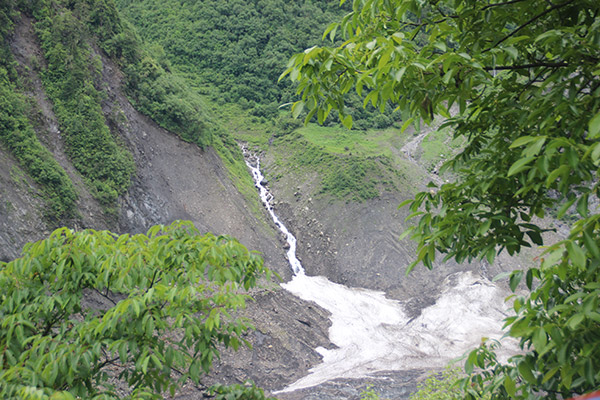The great thaw
By Satarupa Bhattacharjya in Deqen, Yunnan province ( China Daily ) Updated: 2017-07-08 07:32:39
 |
|
An icy trickle near the Mingyong glacier.[Photo by Shi Wenzhi/China Daily] |
Views on global warming
Glacial ice is considered to be the largest reservoir of fresh water on Earth. Going by a world inventory, there are 198,000 known glaciers.
According to some experts in China, "high-mountain Asia" has 94,000 glaciers, the largest number outside the polar region. These glaciers feed many important rivers, such as the Yangtze, Yellow, Ganges, Brahmaputra, Indus and Mekong, which supply water to more than 1 billion people.
Most of these glaciers have melted over recent decades at an average rate of nearly 1 percent, with temperature and precipitation mainly influencing the process, they say.
"If the ice from such banks is depleted, there will not be enough water in 100 years for the purpose of irrigation (in parts of Asia)," John Moore, chief scientist, College of Global Change and Earth System Science at Beijing Normal University, says.
Glacial runoffs could also lead to flooding in some places and interfere with the rainfall. Some attribute the rise in sea levels to melting glaciers, while others say it is due to global warming.
Scientific equipment like Agro floats have indicated that ocean temperatures have increased in the past 30 or 40 years, causing land ice and ice sheets to melt further.
|
|
|
|
|
|
|
|

























 Raymond Zhou:
Raymond Zhou: Pauline D Loh:
Pauline D Loh: Hot Pot
Hot Pot Eco China
Eco China China Dream
China Dream China Face
China Face






